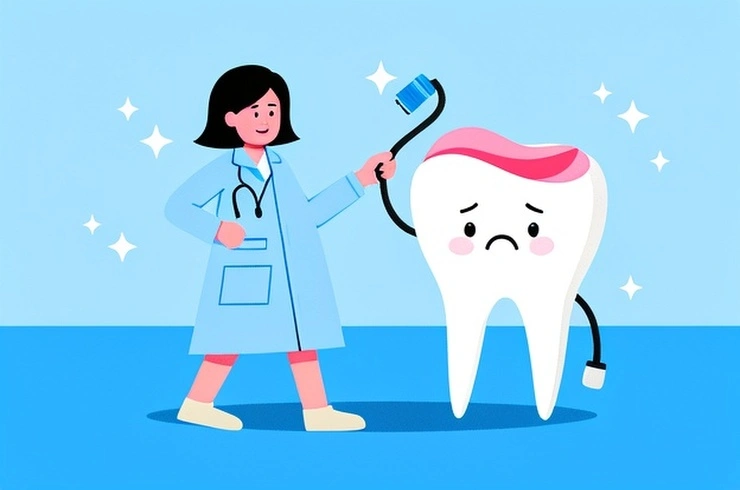
Cavities, scientifically termed dental caries, are holes that develop on the hard surface of your teeth due to a process of decay. This decay begins when bacteria in your mouth feed on sugars and carbohydrates, producing acids. If these acids aren't brushed away, they dissolve the minerals in your tooth enamel. Over time, the enamel erodes, forming tiny pits that gradually enlarge, eventually leading to a full-blown cavity.
The symptoms of a cavity vary depending on its size, location, and severity. In their early stages, cavities might be symptom-free. However, as they progress, you may experience a toothache, sensitivity to hot, cold, or sweet foods, visible holes or pits, tooth discoloration (brown, black, or white stains), and pain when biting down.
Catching cavities early is crucial. White spots on your tooth surface are an initial warning sign, indicating decay hasn't yet broken through the enamel. At this stage, methods like fluoride application can help the tooth repair itself (remineralize). Once the enamel is compromised, a dentist must intervene. Standard treatment involves removing the decayed portion of the tooth and restoring it, typically with a filling.
When treating a cavity, your dental professional will first numb the area. Then, they'll remove the diseased tooth material. If the decay is contained, a filling, made from various materials, will be used. If the decay is extensive, the dentist will recommend a more comprehensive restoration.
Cavities can form in different areas of your mouth, influencing their development rate and your risk factors:
Coronal cavities are the most common, found on the chewing surfaces of teeth in both children and adults.
Root cavities occur at the tooth root, as acids erode the softer cementum, which covers the root. Gum recession, common with age, exposes these areas to decay.
Recurrent decay forms around existing fillings or crowns if plaque buildup is not controlled.
Interproximal cavities develop between teeth, especially the back teeth, which are often harder to clean effectively.
The good news is that cavities are highly preventable. Adopt these simple oral hygiene habits:
Brush at least twice daily and floss daily to remove plaque from between teeth and below the gumline.
Use antibacterial mouth rinses to reduce cavity-causing bacteria.
Schedule regular dental checkups for preventive care and early detection.
Maintain a well-balanced diet, limiting sugary and starchy foods. When consumed, try to eat them with meals to minimize tooth exposure to acids.
Chew xylitol-containing gum, as xylitol doesn't feed bacteria.
Use fluoride dental products, including toothpaste and mouth rinses.
Ensure children's drinking water is fluoridated or discuss fluoride supplements with their dentist/pediatrician.
Ask your dentist about dental sealants for yourself and children to protect cavity-free teeth.
Cavities most commonly form in hard-to-clean areas such as cracks, pits, or grooves in back teeth, between teeth, around existing dental work, and near the gumline. Pay extra attention to cleaning these spots.
Dentists employ several methods to check for cavities during an exam:
Probing with an explorer tool to find weakened enamel.
Reviewing X-rays for new decay, especially between teeth.
Applying non-toxic liquid dyes to detect decay.
Using special lasers to identify very early decay.
Early-stage cavities are usually painless. Pain or sensitivity, especially to hot, cold, or sweet foods, often signals a more advanced cavity, warranting an immediate dental visit.
Ignoring cavities can lead to severe consequences. Untreated tooth decay will worsen, potentially destroying the tooth. Furthermore, poor oral hygiene and dietary habits that led to one cavity can lead to more. Existing fillings or crowns, especially if rough or broken, can also harbor bacteria, leading to new decay beneath them.
Preventing cavities starts with consistent, good oral hygiene. Brush with fluoride toothpaste twice a day, floss daily, and visit your dentist every six months.
Pro Tip
The content of the article is shared by netizens, please carefully identify it